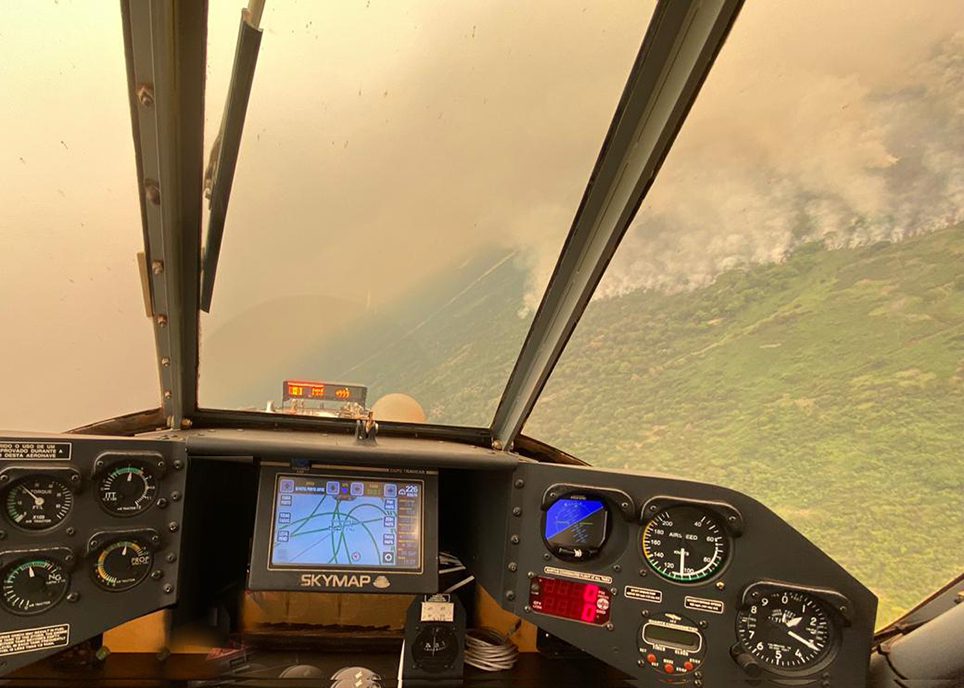Figures include 65 conventional-engine Ipanema planes announced by Embraer, plus 84 turboprop planes manufactured by the US companies Air Tractor and Thrush.
(Sindag) Brazilian agricultural aviation will have an additional 149 new aircraft by 2023. This is according to information gathered this week by Sindag from the market. The data takes into account aircraft already delivered and totals 84 turboprop planes. Plus the 65 Ipanema 203 piston-engined aircraft announced on Monday (15) by Embraer.
In the case of turboprops, 75 Air Tractor models (manufactured in Olney, Texas) have entered Brazil. This includes 16 AT-402 B model aircraft, 12 AT-502A (XP) aircraft, 25 AT-502 B aircraft, 13 AT-602 aircraft and nine AT-802A aircraft (the largest agricultural aircraft in the world, with a hopper capacity of 3,000 liters). This plus nine turboprops manufactured by Thrush Aircraft in Albany, Georgia.
Although Sindag has not yet completed an updated survey of the entire Brazilian aero-agricultural fleet (which is estimated at more than 2,600 aircraft), the preliminary figures reaffirm the greater growth of the turboprop fleet. This is especially true because they have a higher capacity and higher performance, ideal for larger areas. This trend has been going on for more than 10 years and is also accompanied by a greater variety of models in the segment.
NATIONAL MODEL

However, the nationally manufactured model remains unbeatable, still accounting for at least 50% of the entire national fleet. And with the factory announcing the goal of increasing its production to 70 planes by 2024. This is due not only to the importance of the aero-agricultural sector for productivity in the country’s main crops (i.e. producing more on a large scale, but without advancing the agricultural frontier). But, in the case of the Ipanema, also due to the appeal (economic and environmental) of its ethanol-powered engine. In addition to other operational characteristics that place it in an important operational niche.
In fact, the Ipanema is directly responsible for the fact that around a third of Brazil’s aero-agricultural fleet today is powered by green fuel. It was designed in the 1970s, but is now in its seventh generation, with the EMB-203 model (launched in 2015 and with some modifications in the 2020 version). In addition, the Ipanema has been running on ethanol since 2004 – from the EMB 202A model, which was the first aircraft in the world to be approved to run on biofuel.
To top it off, in December the factory in Botucatu reached the milestone of 1,600 agricultural aircraft produced since the 1970s. This means that the plane accounts for more than 50% of the Brazilian agricultural fleet. In fact, the longevity of Embraer’s project has also contributed to another milestone for the model: the Ipanema appears at the top of the list of the 10 aircraft models (planes or helicopters) with the highest number flying in Brazil in 2023. That’s according to an article published at the end of 2023 in Aeroflap magazine.
SEPUTAGENERATION IN THE COUNTRY
Agricultural aviation has existed in the world for over 100 years and has been used in Brazil since 1947. And since the 1960s, it has been the only crop management tool with specific (and broad) regulations. That’s why it’s also the easiest to inspect. According to Sindag estimates, between 25% and 30% of Brazilian crop applications are currently made by aircraft – which totals around 100 million hectares in all phases of crop management, in 24 states.
With the advantages of avoiding crushing (since it doesn’t rotate on the ground, over the plants) and having a speed that allows it to complete operations before the climatic window for applications changes (ideal wind, humidity and temperature conditions – essential for both aerial and ground applications). And other factors mean that aviation even reduces the need for products applied to crops, generating savings for the producer.
This makes agricultural aviation essential for the productivity of the country’s main crops, such as soybeans, corn, sugar cane, cotton and rice. It also influences livestock farming, since soy and corn make up 27% of chicken feed, 30% of laying hen feed, 22% of pig feed and 22% of dairy cow supplementation.
In addition, at least since the 1990s, the aero-agricultural sector has been involved in forest firefighting operations in the country practically every year – a prerogative it has had since 1969. So much so that, in 2021 (the latest survey carried out by Sindag), agricultural planes launched almost 20 million liters of water against flames in several states. These operations involved around 30 aircraft, as well as around 45 pilots and 40 support staff at the bases. A force that also helped guarantee the safety of hundreds of firefighters and volunteers in the teams that worked on the ground against the fires.

Sindag currently covers more than 200 agricultural aviation companies (around 90% of the market). The sector also has around 700 private operators (which are rural producers and cooperatives that have their own planes or helicopters).
*** Translated by DEFCONPPress FYI Team ***
